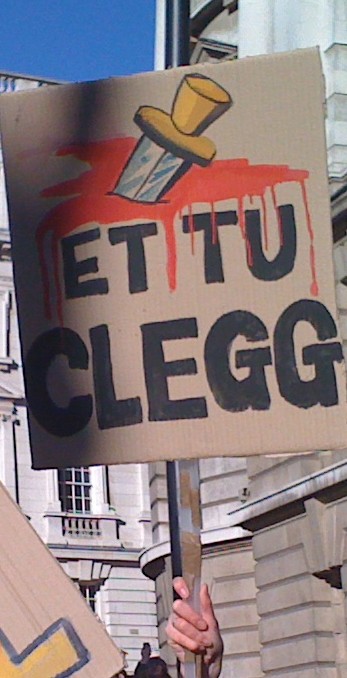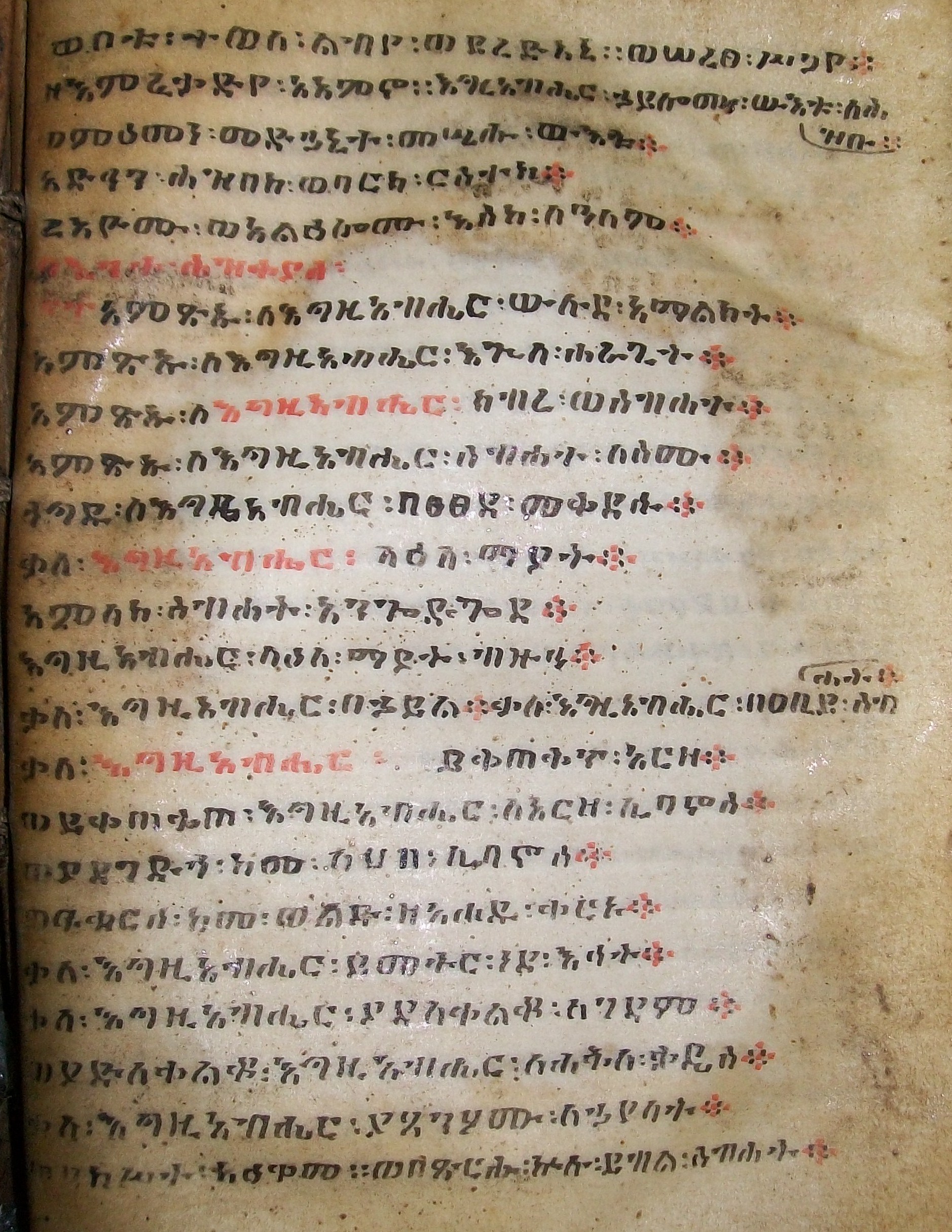 The CMT is of course, studiedly neutral on matters political–but on the day of the big Commons vote it’s perhaps appropriate to observe that the recent UK protests over tuition fees have led to the creation of some wonderful material texts. Here is one home-made placard which epitomizes the wit and anger that we’ve seen on the streets in the last few weeks…
The CMT is of course, studiedly neutral on matters political–but on the day of the big Commons vote it’s perhaps appropriate to observe that the recent UK protests over tuition fees have led to the creation of some wonderful material texts. Here is one home-made placard which epitomizes the wit and anger that we’ve seen on the streets in the last few weeks…
Amanda Vickery, Professor of History at Royal Holloway, University of London, kicked off her TV series ‘At Home with the Georgians’ last week. She enters a crowded marketplace, dominated by men modelling themselves on Schama and Starkey, and frequently presenting a distinctly macho brand of history (what’s done is done, but all the same, Be Very Afraid). Vickery’s innovation was wonderfully simple: she travelled with an ipad. So, intercut with the familiar historical reconstructions and country-house shots, we were treated to numerous close-ups of documents and images being prodded and poked into life by the historian’s finger. They slid in and out, grew and shrank at the touch of a screen, in an display of pure archival prestadigitation.
All this sets me wondering about the ways in which our unparalleled ability to reproduce documents from the past might be changing our attitude to those documents–increasingly making them the subject rather than merely the source of history. And sharpening our sense of their material specificities–allowing us to see the weave of the paper, the shimmer of ink–even as it robs us of much crucial physical information, and obliterates the memory of the archive in which the original resides. But for now we should surely celebrate Professor Vickery’s coup in showing us that, like 18th-century gentlemen, 21st century historians can get ahead through their gizmos.
If you’re visiting the ‘Journey through the Afterlife: Ancient Egyptian Book of the Dead’ exhibition at the British Museum (mentioned on this blog a few weeks ago) you might want to extend your stay with a visit to the free, smaller exhibition, ‘Images and Sacred Texts: Buddhism Across Asia’, open until April 2011.
The Buddhist religion centres on the ‘three jewels’; the Buddha, his teachings, and the community of the faithful, and this exhibition explores how these are depicted across geographical and chronological distances. The exhibition brings together an astonishing range of images and artefacts from Asian lands over the last two thousand years, amongst which the exquisitely decorated Buddhist texts, on palm leaves and paper, promise a fascinating insight into the spread of this faith and its philosophy through and beyond Asia. Again, do leave comments below after your visit!
CALL FOR PAPERS
Out of Bounds: Mobility, Movement and Use of Manuscripts and Printed Books, 1350-1550 Twelfth Biennial Conference of the Early Book Society
in collaboration with the Twelfth York Manuscripts Conference in honour of Professor Toshiyuki Takamiya
3-7 July 2011
Centre for Medieval Studies, University of York
The Early Book Society will hold its twelfth biennial conference in collaboration with the York Manuscripts Conference, at the Centre for Medieval Studies, University of York, from the 3rd to the 7th of July 2011. The theme of this year’s conference will be Out of Bounds: Mobility, Movement and Use of Manuscripts and Printed Books, 1350-1550. This theme may be interpreted literally or figuratively: papers might consider unbound or rebound MSS and books, or MSS and books without bindings (rolls), or marginalia beyond the boundaries of the text, or the ways in which such boundaries might be created, or even MSS and books that travel from their place of origin. Secondary threads running through the conference will be related to Prof. Takamiya’s manuscripts or Nicholas Love (the conference includes a visit to Mount Grace Priory). Please submit proposals for 20-minute papers relating to the conference themes either to Martha Driver or Linne Mooney by 1 December 2010. Proposals sent via email should be copied to both (LRM3@york.ac.uk and MDriver@pace.edu) or by post to Martha:
Prof Martha Driver
English Department
Pace University
41 Park Row, 15th floor
New York, NY 10038
USA
Please include your name, title and affiliation, the proposed title of your paper, a brief abstract of your paper, and indication of any electronic aids requested (data projector, overhead, and/or slide projector).
Linne R. Mooney
Professor in Medieval English Palaeography
University of York
King’s Manor
York YO1 7EP
U.K.
telephone (UK) 01904 433909
telephone (from USA) 011 44 1904 433909
lrm3@york.ac.uk
Medieval Manuscript Studies in the Digital Age (MMSDA): 2-6 May 2011
The Institute of English Studies (London) is pleased to announce the third year of this AHRC-funded course in collaboration with the University of Cambridge, the Warburg Institute, and King’s College London.
The course is open to arts and humanities doctoral students registered at UK institutions. It involves five days of intensive training on the analysis, description and editing of medieval manuscripts in the digital age to be held jointly in Cambridge and London. Participants will receive a solid theoretical foundation and hands-on experience in cataloguing and editing manuscripts for both print and digital formats.
The first part of the course involves morning classes and then visits to libraries in Cambridge and London in the afternoons. Participants will view original manuscripts and gain practical experience in applying the morning’s themes to concrete examples. In the second part we will address the cataloguing and description of manuscripts in a digital format with particular emphasis on the Text Encoding Initiative (TEI). These sessions will also combine theoretical principles and practical experience and include supervised work on computers.
The course is aimed principally at those writing dissertations which relate to medieval manuscripts, especially those on literature, art and history. There are no fees, but priority will be given to PhD students funded by the AHRC. Class sizes are limited to twenty and places are ‘first-come-first-served’ so early registration is strongly recommended.
For further details see <http://ies.sas.ac.uk/study/mmsda/> or contact Dr Peter Stokes at mmsda@sas.ac.uk.
Book Destruction Conference: Call for Papers
November 3rd, 2010Calls for Papers, News; harrietphillipsBook Destruction: Call for Papers for a Conference at Senate House, University of London, 16 April 2011
Much attention has been given in recent years to the book as a material, historical object and its possible technological obsolescence in the era of digitization. Such reflections have tended to concentrate on the production and cultural circulation of books, their significance and their power to shape knowledge and subjectivities. But there is another aspect to our interactions with the book which remains relatively unexplored: the history of book destruction. In certain circumstances books are treated not with reverence but instead with violence or disregard. This conference invites reflections on this alternative history of the book, and we welcome papers from a range of historical periods and disciplinary backgrounds. We welcome proposals from postgraduate students, as well as from more established academics.
Why do people destroy books? What are the mechanics of book destruction: the burning, pulping, defacing, tearing, drowning, cutting, burying, eating? What are the cultural meanings that have been attached to book destruction, and what do they reveal about our investments in this over-familiar object? Why should the burning of books have such symbolic potency? Book destruction is often invoked as a symbol of oppressive, despotic regimes; what is our ethical position, now, in relation to such acts? What is the relationship between book destruction and other forms of cutting up (quotation; collage)? When do acts of destruction become moments of creativity? How does destruction relate to recycling and reuse? Do transitions in media (manuscript to print; print to digital) threaten those older forms? How might the current phase of digitization and the gradual disappearance of library stock relate to prior moments of destruction? In the internet age, is it still possible to destroy (that is, completely erase) a text? What does materiality mean in a digital age?
Please send 300-word proposals (for a 20 minute paper) and a brief CV, to Dr Gill Partington (g.partington@bbk.ac.uk) and Dr Adam Smyth (adam.smyth@bbk.ac.uk), by 10 January 2011.
Enlightenment Correspondence: letter-writing and reading in the 18th century
Presented by the Electronic Enlightenment Project and the Bodleian Library Centre for the Study of the Book
St Anne’s College, Oxford
Tsuzuki Lecture Theatre
Saturday, 13 November, 2010
9:30 am – 5 pm
A colloquium on the sociology of the letter, exploring the links between correspondence and publishing in the Enlightenment.
See further http://www.bodley.ox.ac.uk/csb/enlightenment.htm
PALAEOGRAPHY AND POST-PALAEOGRAPHY: Manuscripts from the First to the Twenty-First Century:
Friday 3 December 2010
Organised by the Institute of English Studies and the Association for Manuscripts and Archives in Research Collections (AMARC). Hosted by the Centre for Manuscript and Print Studies (Institute of English Studies), Senate House, University of London, Malet Street, London WC1E 7HU.
This one-day conference organized by Michelle Brown and Wim Van Mierlo at the Institute of English Studies, with support from AMARC, will look at aspects of manuscript culture before and after the advent of print. The aim is to discuss practices, problems, theories and methods of analysis irrespective of place or period to see where methodologies overlap or complement each other. Topics will include: medieval manuscript studies in the digital age; integrating and migrating methodologies – quantitative and qualitative, early and modern; what is a modern manuscript?; the codicology of modern paper; handwriting in the twentieth century.
See further http://ies.sas.ac.uk/events/conferences/2010/AMARC/index.htm>
Early Modern European History Seminar, this week:
Karen Bowen: ‘Images as records of social history: the case of representations of Dutch pedlars with paper wares’
Leslie Stephen Room, Trinity Hall, 1pm (participants are welcome to bring lunch)
Karen Bowen is co-author with Dirk Imhof of Christopher Plantin and Engraved Book Illustrations in Sixteenth-Century Europe (Cambridge University Press, 2008)
